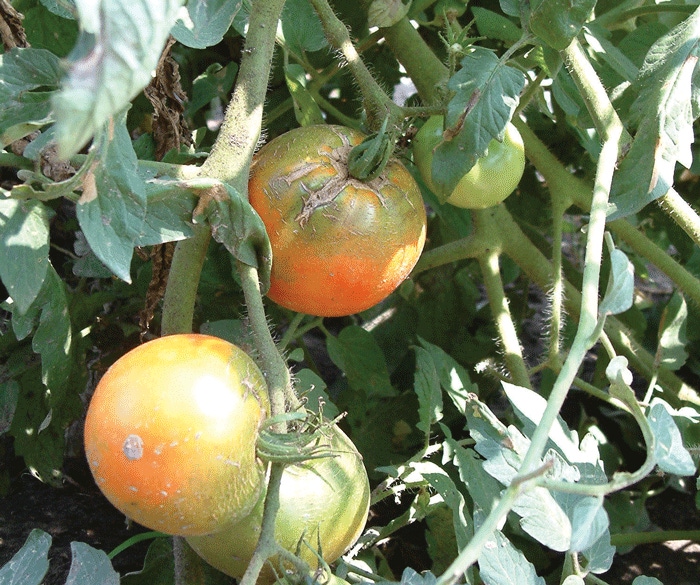
Fresh vegetable price index continues to flatten
• October to December 2012 average prices for celery, sweet corn, cucumbers, onions, snap beans, and field tomatoes all are above corresponding prices from the previous year.• But even with this gradual improvement, the current fourth quarter price still remains below the three-year average (2009-11) for both onions and field tomatoes.• Grower prices for broccoli, carrots, cauliflower and lettuce remain below the previous year as well as below the three-year average.
January 17, 2013

Grower prices for many fresh vegetables continued a gradual recovery from the lows of late 2011/early 2012, although the projected overall fourth quarter price index for fresh vegetables is down six points from the third quarter 2012 index, according to the latest USDA Vegetables & Melons Outlook.
October to December 2012 average prices for celery, sweet corn, cucumbers, onions, snap beans, and field tomatoes all are above corresponding prices from the previous year.
But even with this gradual improvement, the current fourth quarter price still remains below the three-year average (2009-11) for both onions and field tomatoes.
Grower prices for broccoli, carrots, cauliflower and lettuce remain below the previous year as well as below the three-year average.
Sweet corn, cucumber and snap bean markets have shown the strongest recovery with fourth quarter 2012 prices above both the previous year and the three-year average.
Grower prices for snap beans have remained firm through 2012. The overall price index for all vegetables remains 9 percent below the three-year average.
Shipments of most vegetable items increased between September and October 2012.
Volume of snap beans and squash, in particular, has been strong compared to this past September.
Asparagus shipments from Peru dropped off earlier in 2012 than the previous two years, reducing overall shipment volume in October 2012. Increased demand from European and processing markets was reported to cut into the Peruvian supply.
Despite improvement in fourth quarter average prices for broccoli and cauliflower, when compared with the third quarter of 2012, the upswing has not been as strong as the previous year.
The reported average fourth quarter 2012 fresh broccoli price is up more than five cents per pound compared with the third quarter 2012, and cauliflower price is up more than 10 cents per pound in the same period.
Prices for the two fresh vegetables have weakened late in the fourth quarter. Good weather in California and typical drop-off in demand between Thanksgiving and late December have pushed more recent prices down.
The Producer Price Index (PPI) for fresh-market vegetables (excluding potatoes) continued to experience a sharp decline, with prices falling by 12.5 percent between September and October of this past year, and 16.5 percent from October of 2011.
Cabbage was an exception
With the exception of cabbage, the PPI for most commodities faced a decline in October 2012 (either from last year or last month). The spinach index fell 46.4 percent between October 2011 and October 2012.
Prices for carrots, greens and squash, however, rose between September and October 2012 but are still below October prices from the previous year.
The increased late fall volume of cauliflower is again reflected in October 2012 price index, which decreased almost 22 percent from the previous month, even as cauliflower PPI remains 30.8 percent higher than the previous year.
Despite a downward trend in the PPI for most vegetables, the Consumer Price Index (CPI) for all fresh-market vegetables (including potatoes) rose slightly (0.6 percent) between September and October with prices for tomatoes, lettuce and other vegetables increasing by 3.7 percent, 0.6 percent and 1.2 percent, respectively.
The CPI for potatoes, however, declined 3.8 percent during this period. Compared with a year ago from this past October, the CPI for fresh vegetables dropped 3.2 percent, driven by downward trends faced by potatoes (10.9 percent), lettuce (4.1 percent) and tomatoes (1.7 percent).
During the first nine months of 2012 (January to September), the volume of fresh-market vegetable imports (excluding potatoes, mushrooms, and pulses) declined 7 percent from the same period a year ago.
This drop in imports was mainly contributed by dry bulb onions and other vegetables (including carrots, broccoli, celery, etc.), which combined represented a 23-percent share of total import volume.
Import volume of fresh tomatoes (leading fresh-import item by volume) increased 3 percent during this period. Mexico and Canada, which are the largest suppliers of fresh tomatoes to the United States, maintained their position (89-percent and 9- percent shares, respectively) in the first 9 months of 2012.
Other leading fresh import commodities by volume, which also rose during this period, include cucumbers (14-percent share of total volume), bell peppers (11 percent) and chile peppers (7 percent).
The top five sources of fresh-vegetable imports from January to September were Mexico (77 percent of total volume), followed by Canada (13 percent), Peru (3 percent), China (1 percent) and Costa Rica (1 percent).
In contrast, the volume of fresh-market vegetable exports (between January and September) rose 3 percent from a year ago this September.
Exports of dry bulb onions (with 14-percent share of total volume), declined 4 percent while broccoli, celery, lettuce, and tomato exports increased.
Broccoli exports noticeably increased by 24 percent during this period, with most of that increase going to top foreign markets like Canada (23 million pounds), Japan (15 million pounds) and Taiwan (4 million pounds).
Exports of broccoli to South Korea, the fifth-leading export destination, increased five-fold from last September.
Even with exports on the rise, the United States continued to strengthen its position as a net importer of fresh-market vegetables in 2011.
The value of fresh vegetable exports totaled $2 billion (up 3 percent from 2010) while the value of fresh vegetable imports totaled $5.6 billion, thus resulting in a gap between imports and exports by $3.6 billion.
About the Author(s)
You May Also Like



